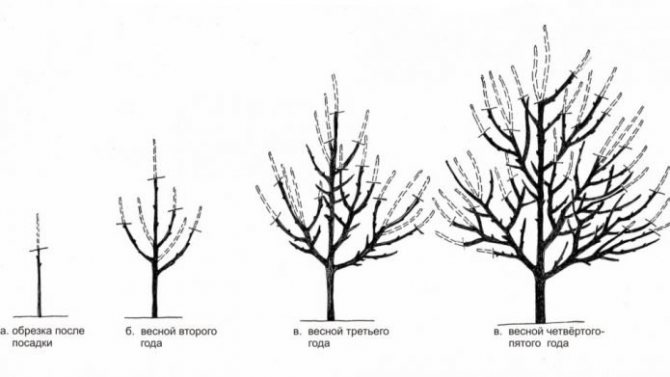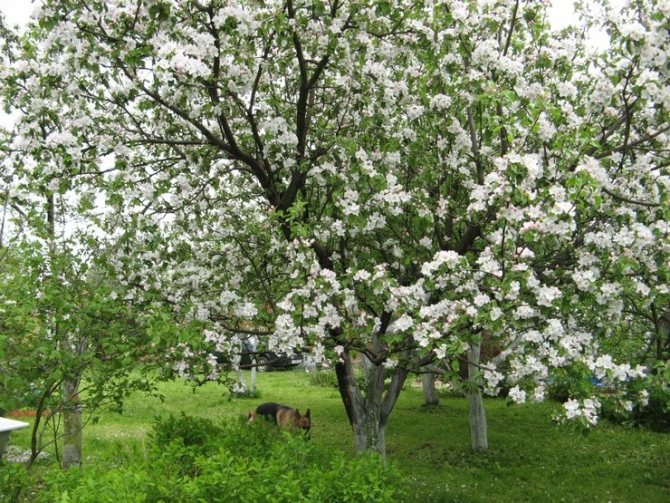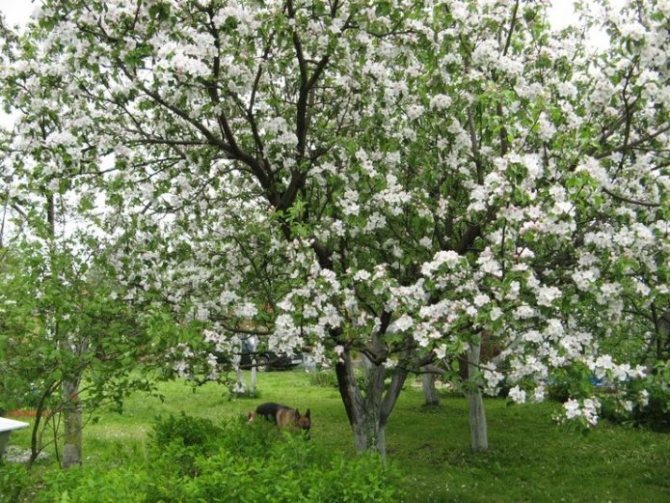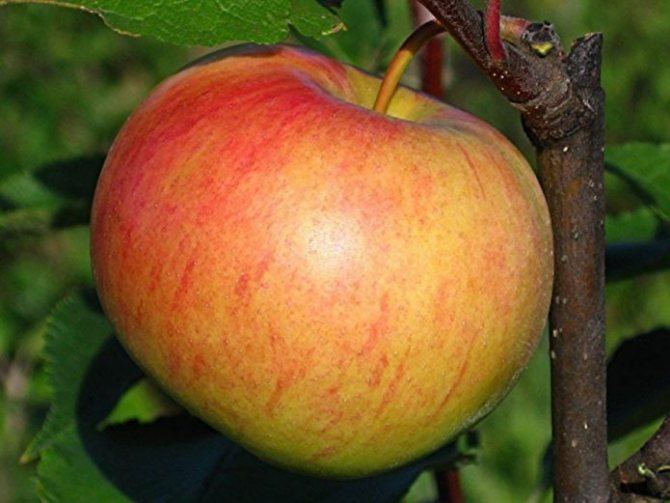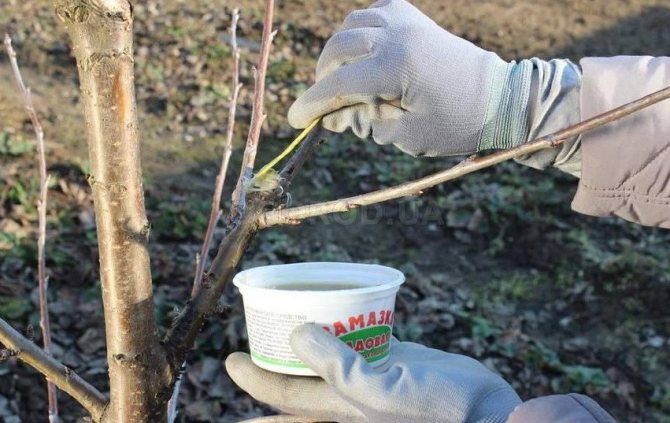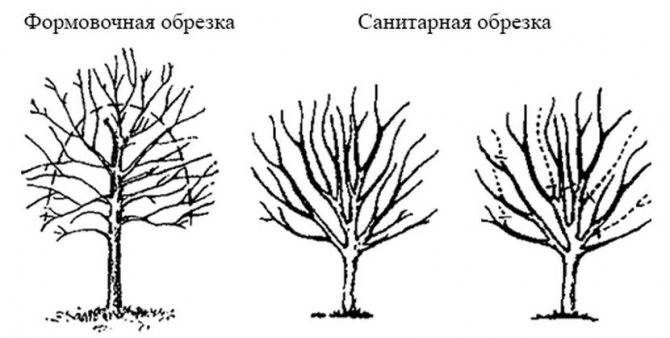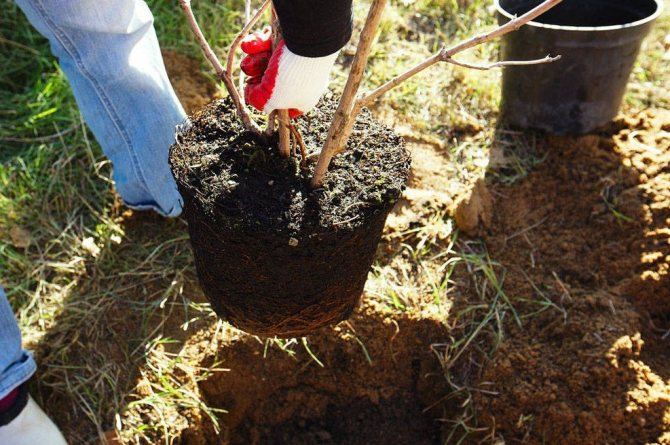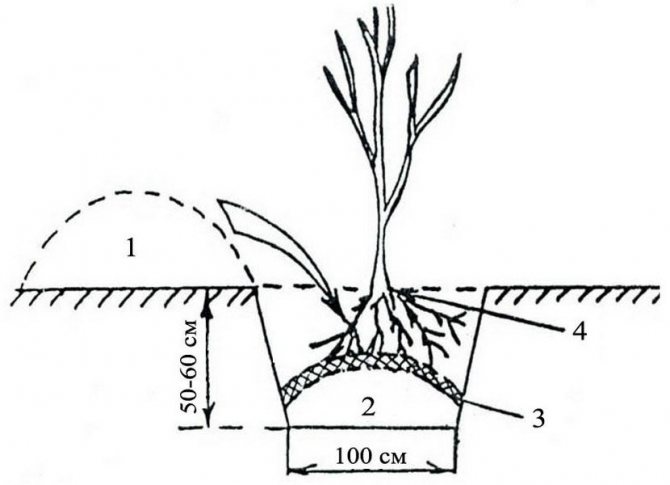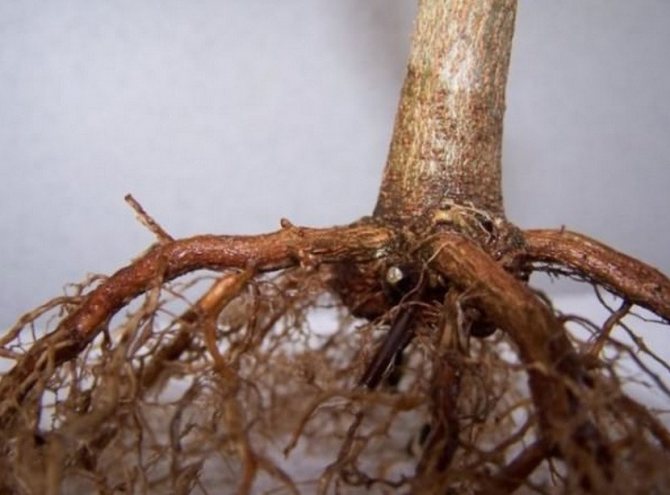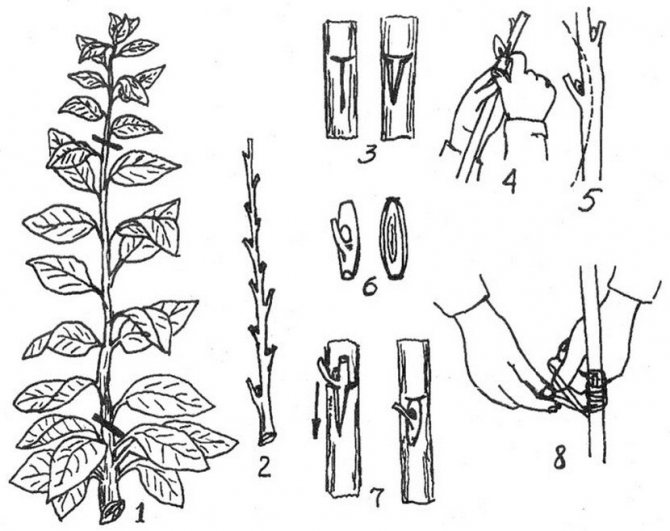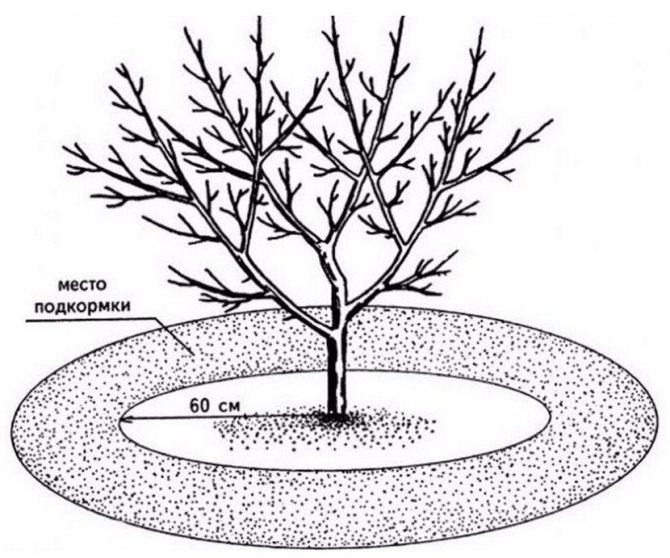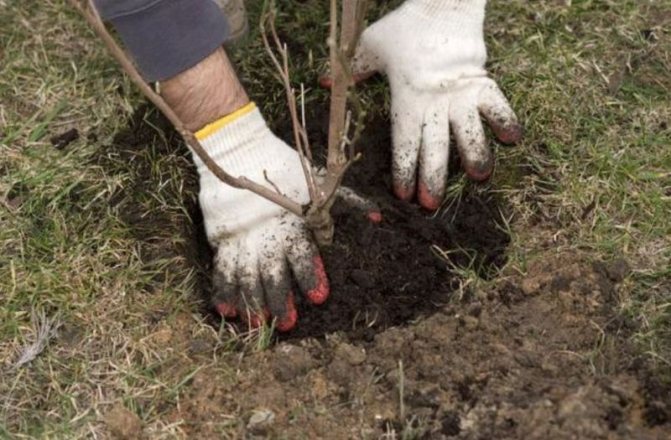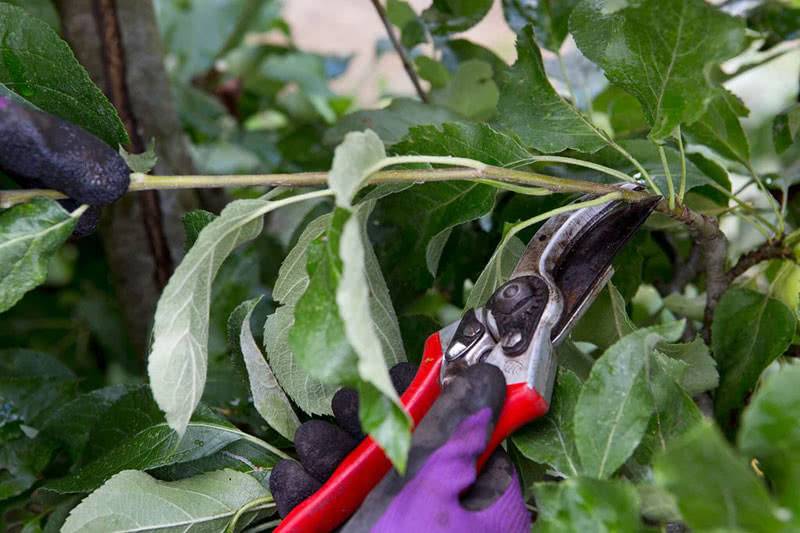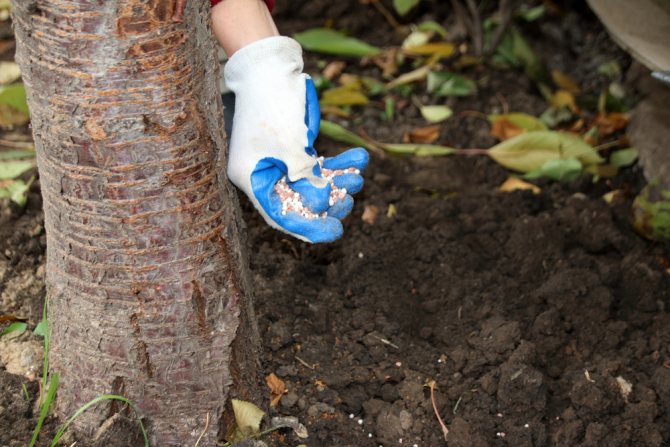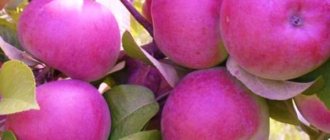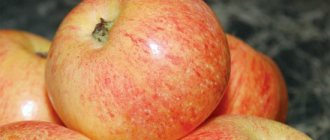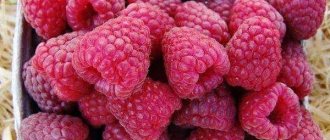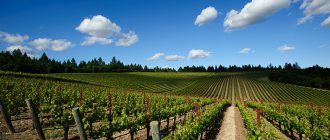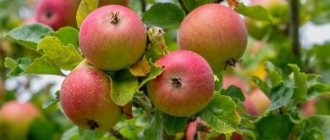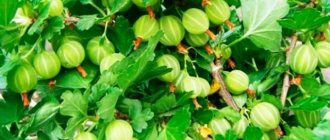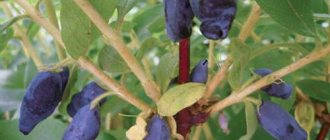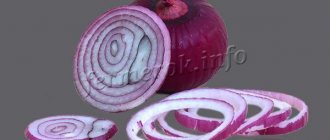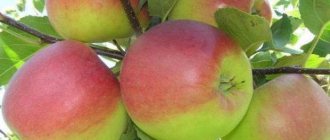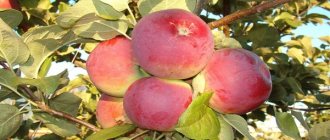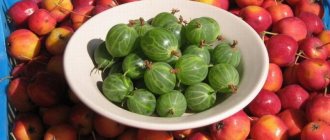Choosing the right apple variety is an important task for a gardener. The variety of varieties often discourages summer residents. After all, the landing site is limited.
An unfamiliar variety may not satisfy the wishes of the gardener, and it will be possible to find out only after a few years, when the tree begins to yield.
therefore it is better to plant proven varieties, the declared characteristics of which are confirmed by time and reviews of the owners. In this article, we will consider the Medunitsa apple variety: description, photos, reviews, planting and much more.
Attention! Lungaria is recognized by gardeners as one of the best summer sweet early ripening apple trees.
Description of the apple tree Medunitsa
What is the height of the apple tree
Lungwort is a cross between striped cinnamon and Welsey. The variety is tall - the tree can reach 5-7 meters in height. Takes up a lot of space in the garden. Has a rare wide pyramidal crown with slightly drooping branches. Different sizes of leaves are rough to the touch. They are formed on light brown shoots. There is a small, displaced pattern on the plate.
How long does an apple tree live
Apple trees live up to 50-60 years of age. Lungwort on seed stock can live up to 90 years.
How long does an apple tree bear fruit
Active fruiting begins early enough - from 4-7 years old, depending on the region and growing conditions. Lasts up to 60 years of age of the tree. However, annual fruiting is possible only in the first 12-15 years. If the year was especially fruitful, then the next season the apple tree will not be able to bear fruit. If you want to harvest every year, the tree needs ovary rationing. In old age, productivity decreases, giving way to periodic pauses, rejuvenating pruning is required.
How many apple trees bloom
Apple trees bloom from late April to late May, 2 weeks after bud swelling. The flowering time can vary from day to day depending on the variety. Flowers remain on the tree for three to five weeks. During this time, bees pollinate them and fruit is tied.
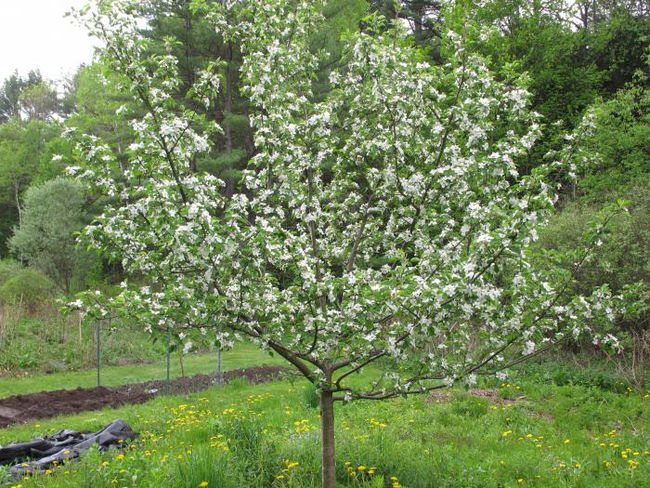
The lungwort blooms in late May - mid June, depending on the region of growth.
The best pollinators for apple lungwort
This variety is self-pollinated. However, experts still recommend planting pollinators next to it. The best varieties for this:
- Anis Sverdlovsky,
- Chernenko's victory,
- Striped cinnamon
- White filling
Ripening terms
Lungwort is a summer ripening variety. In Central Russia, apples ripen by mid-August. In the Moscow region, the date of the beginning of apple picking is September 1. Consumer maturity occurs from September 10 to November 28, that is, within 79 days. But the fruits begin to be eaten before these dates. The winter variety ripens in November.
Yield
The yield of the apple tree is high, up to 180 kg per season, the maximum is more than 400 kg per tree. The fruits are large, weighing about 100-150 grams, yellow-green with a red blush. Their shape is round - conical and round - flat.
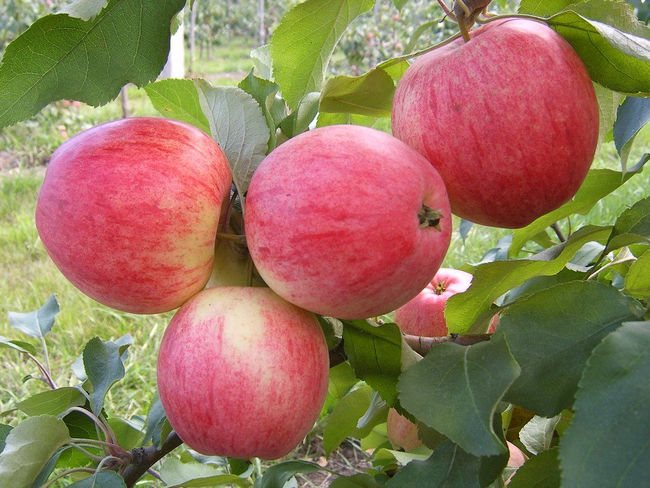

The pulp is juicy, very dense, sweet, light - creamy, has a honey flavor.
Frost resistance
This is one of the most frost-resistant varieties. It tolerates temperatures of -40 degrees. But young trees need shelter. Does not lose its productivity and decorative effect after a harsh winter. Therefore, the culture has spread widely throughout the country, including the Urals and Siberia.According to the observations of gardeners of the Leningrad region, apple trees of this variety often freeze slightly, but quickly recover.
Resistance to major diseases
The lungwort is resistant to scab and rarely suffers from rotting, even in humid climates. Under unfavorable conditions, the disease can affect the variety and affect the fruit yield. To prevent unpleasant consequences, it is recommended to carry out prevention.
Harvest storage
Start harvesting from the lower branches of the plant. Pluck the apples carefully so as not to damage the skin. Harvested in dry weather. Store at a temperature not higher than
+5 ° С. For best preservation, wrap the apples in paper so that they do not touch, and put them in a wooden box. In this state, apples can be stored without losing their taste for about 1.5-2 months.
Selection
Breeding work for the Medunitsa variety was started back in the 30s of the last century. At its origins was Professor S.I. Isaev, a well-known biologist in the Soviet years.
Thanks to his work, more than 40 varieties have appeared winter-hardy, disease-resistant apple trees... The cultivation of immune varieties was the main activity of the breeder. The lungwort was obtained by crossing Welsey and Cinnamon Striped.
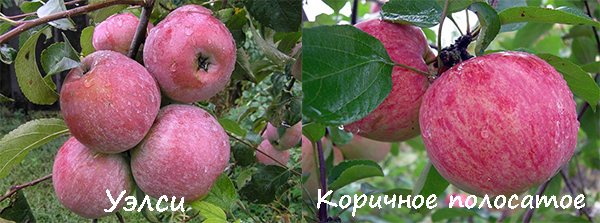

Lungweed is a cross between Welsey and Cinnamon Striped.
Contrary to popular belief, the apple tree got its name not for its honey taste. This is a reference to the widespread flower, which is one of the first to appear in the spring.
The professor called his wife "Medunitsa", and later gave this name to the legendary apple tree. This variety is also sometimes called "Medovitsa" (the apple tree, by the way, in the mid-50s served as the basis for the award of the Stalin Prize to the biologist).
Important! The variety has not been included in the State Register to this day. This does not prevent him from being loved by many gardeners in the country.
Advantages and disadvantages
The advantages of the variety:
- early onset of fruiting;
- early ripening of fruits;
- excellent honey taste of fruits;
- high productivity;
- scab resistance;
- good frost resistance;
- drought resistance;
- good transportability;
- general consumption.
Disadvantages of the variety:
- short shelf life of ripe fruits;
- after 10-15 years, the frequency of fruiting;
- asymmetrical ripening of fruits;
- the apple tree takes up a lot of space in the garden;
- height makes it difficult to pick apples;
- requires constant competent pruning.
Reviews about Medunitsa
The apple tree Medunitsa has only positive reviews.
Gracie Archer
Those who love the taste of melting honey in their mouth will definitely name the popular summer variety of lungwort. The tree is harvested in the second half of the summer. Apples taste incredibly sweet.
Tatyana Ivanovna
Fruits are medium in size, weighing 110-140 g, with yellow skin and a beautiful scarlet mottled blush, especially bright in the sun. Rounded apples of "lungwort" are distinguished by fine-grained juicy pulp of a creamy shade and delicious aroma.
Nikolay Nikolaevich
It is an excellent winter hardy variety that tolerates frosty winters well. High yields and scab resistance are important characteristics in favor of this variety.
Winter hardiness attracts gardeners living in the northern part of Russia, and scab resistance makes the apple tree unpretentious to care for.
Flowers
At the time of formation, the flowers of Lungwort have a pale pink color. As the inflorescence forms, the pinkness goes away, the tree becomes snow-white. Each flower is about 5 cm in diameter. They are collected in inflorescences of 4-5 flowers. The apple tree Medunitsa looks like a "bride" in snow-white decoration during the period of violent flowering.
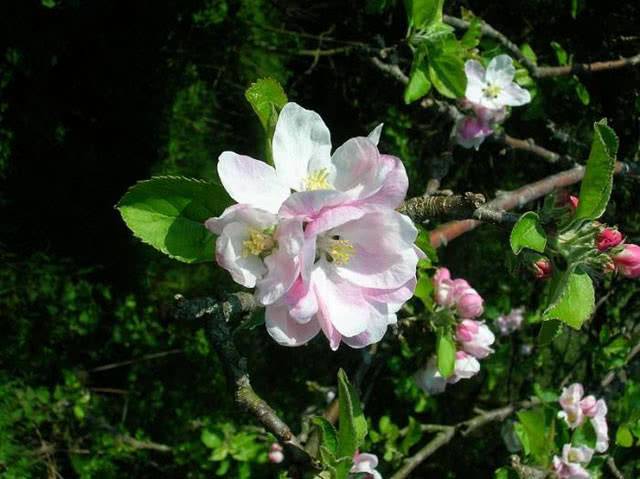

Depending on the place of growth, the period of flower formation falls on May-June.
Types of rootstocks and varieties
Seed stock
Seed stock is usually called trees grown from apple seeds.They are very hardy, viable because live up to 90 years. Tall - 5-7 meters, very unpretentious, high-yielding. Fruiting for at least 50 years. Negative characteristics as in trees of this variety. The distance between the apple trees in the rows should be 6 meters so that the trees do not shade each other.
On a semi-dwarf rootstock
Semi-dwarf and dwarf rootstocks are obtained by grafting, if it is necessary to improve the taste of the variety. They are smaller in height, the fruits are tastier, but the productivity is not more than 15 years. Semi-dwarf rootstock trees 4-5 meters high.
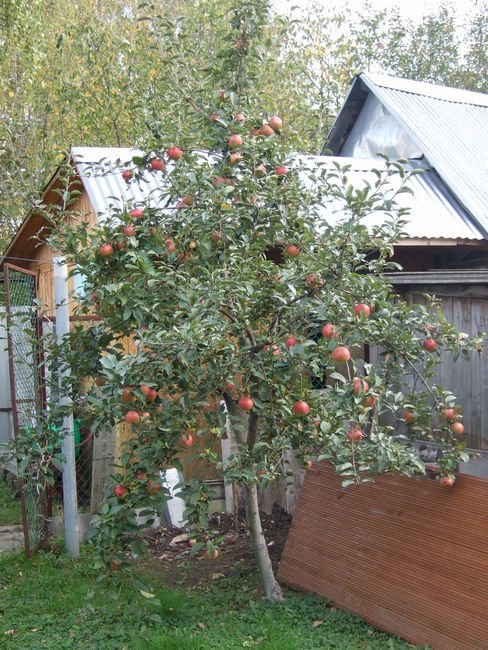

Fruiting 4-5 years after planting.
Dwarf lungwort
The use of a dwarf rootstock made it possible to obtain trees with a height of 2.5 meters. This is handy at harvest time. The culture begins to bear fruit from 3 years after planting, the first apples appear in the middle of summer. Lives no more than 30 years. The weight of one fruit is about 120 g, the skin color is yellow-green with scarlet stripes.
Columnar
This type of stock is used when it is necessary to obtain dwarf growth. The height of the apple tree is from 1.5 to 2.5 meters. The culture begins to bear fruit in the 2nd year after planting. After 12-14 years, the tree dries up. Experts believe that it makes no sense to graft on a columnar stock, because a kind of crown will be broken. The branches of a columnar apple tree grow parallel to the trunk. After grafting, the tree will not look like this.
Apple-tree Medunitsa winter
Winter lungwort was obtained by crossing a new variety of cinnamon with a hybrid of the Rinet Simerenko variety. "Winter Medunitsa" is tall. Begins to bear fruit in the 5th year after planting. The fruits are picked for winter storage at the end of September.
They are usable immediately and do not need to ripen during storage. The fruit is yellow with a red side, juicy and sweet. One fruit can reach a weight of about 120 g. Fruits are stored until March, and in December the taste resembles an unripe conference pear. "Medunitsa Winter" has its own advantages:
- fruit can be eaten immediately after harvest;
- apples, on rare occasions, do not have a sour taste.
Agrotechnical cultivation
When growing Lungwort, it is important to follow the rules of tree care, which include the following steps:
Watering
In the first year after planting, you should pay attention to the correct watering of the young tree, and carry out all other procedures when it grows up and gets stronger.
When the top layer of the soil is completely dry, it is watered, this must be done within one month. Then such frequent moistening of the earth is not required and it is carried out 1 time in 7 days.
Crown formation
In the second year, you can start pruning branches to create the correct crown of the Medunitsa. The tiers are formed at a distance of 35-40 cm, they must be discharged. This helps in maintaining the natural pyramidal appearance of the crown. You can shape the wood into a bowl. For this, the shoot located in the center is removed and replaced with 5-6 lateral ones.
Due to its strong growth, its shoots are weak. It is important to adhere to some rules:
- Sanitary pruning should be carried out annually in the spring and autumn periods. It removes damaged branches.
- In the spring, thinning of the crown is performed, which stimulates the growth of young branches and new shoots.
- In the summer, they pinch new growths, and also remove branches that strongly shade the fruits.
Necessary feeding
They are carried out every 6 months. Spring top dressing helps the tree gain green mass, growth and yield. Nitrogen fertilizers are best suited for this. Autumn is aimed at ripening wood and preparing for the winter cold. Potassium- and phosphorus-containing ones are good.
It is worth remembering that when using any fertilizer, the correct dosage must be observed, otherwise you can harm, not benefit the plant.
Harvesting and storage
When picking apples from a summer species, it is worth considering the region of its growth.For example, in areas with a hotter climate, they ripen until mid-August, and in places with a harsh climate, in the first half of September. The winter variety is ready for harvest in September - early October. If the need arises, you can pick apples and a little earlier than the specified time, while they will be in a state of so-called "technical ripeness".
Fully ripe fruits of the summer variety are stored for about 30 days, and collected in an earlier period - 3-4 months. The winter variety can last until spring.
It is important to remember that apples have a tendency to change in taste: it will open as much as possible after 14 days, and then it will gradually deteriorate.
Planting varieties
In the southern regions, lungwort is planted in the fall, from late September to late October. In the north of the country, in the Urals and Siberia - in the spring, as soon as the snow thaws.
We recommend planting the apple tree in loamy soil. The tree does not tolerate standing water, good drainage is necessary. Distance between trees 6 m. Provide free space and an open area for the plant. Saplings must be no more than 2 years old. The planting order is the same as for other apple trees. More information about planting can be found in the article How to plant an apple tree correctly.
Preparing for winter
Young plantings need to be covered for three years until they get stronger. 10 days before the onset of stable autumn frosts, all the garbage is removed in the garden, and a deep digging is carried out.
The lower part of the trunks, together with the skeletal branches, are treated with slaked lime with the addition of a fungicide. Then they spud with a thick layer of peat (15 cm), wrap with a film, on top with a chain-link. The crown is covered with burlap, spruce branches or roofing felt.
In the spring, as soon as the last cold weather has passed and the snow melts, the insulation is removed.
Care rules
Pruning
Branching begins before the juice begins to move and the bud swells. Every year you need to cut off dry branches, small shoots near the roots. For the correct formation of the crown, you need to leave several of the most powerful multidirectional branches.
Crown formation continues up to 5 years of age. In the first year, the central conductor is shortened to stimulate the growth of the lateral branches. In the second year, the first tier of skeletal branches is formed. At 3 and 4, a second tier is formed and the length of the branches is of the second order. From the fifth year, the formative pruning is replaced by sanitary pruning. From the age of 10, rejuvenating pruning begins.
Very important! On apple trees, young branches should be shorter than adults.
Cover the cut with water-based emulsion paint or garden varnish. We wrote in this article about how to use the garden varnish correctly and how it can be replaced.
Watering
Trees need timely watering. If the weather is not dry, then one watering every 14 days is enough; in extreme heat, more frequent and plentiful watering is necessary. For an adult tree, 40 liters of liquid is enough, for an annual tree - about 10 liters.
Top dressing
If the trees were planted with fertilizers, then 3 years can not be fed.
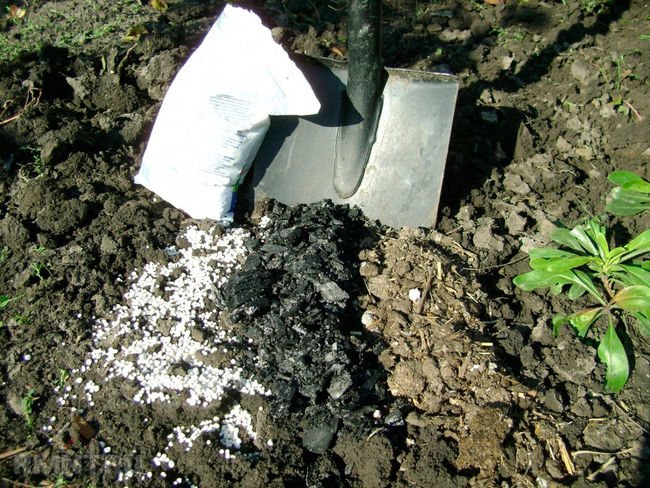

The first feeding is carried out in the spring. 30-40 g of ammonium nitrate and the same amount of nitroammophoska are added to the soil.
When the ovaries begin to form, the plants need to be fed again. The culture should receive 120-145 g of superphosphate, from 8 to 10 kg of humus, 45-55 g of potassium chloride per tree.
It is very useful to alternate root and foliar feeding. Spray twice, before and after flowering, 20 days apart. Use a carbonate solution at a ratio of 60 g per 10 L of water and 250 g of wood ash per 10 L of water. Use solutions with manganese, zinc, copper for setting and growing fruits. Stop them one month before harvest.
It should be remembered that by the middle of summer, nitrogen-containing fertilizing is stopped.It is not necessary to provoke the growth of new shoots, which do not have time to get stronger and mature by winter.
Pests and diseases
Aphid
Tiny, pinhead-sized insects, vary in color depending on the type. They will gather on stems and under leaves, sucking out plant juices.
Symptoms: leaves curl, thicken, turn yellow and die off. Aphids produce large amounts of a sticky residue called "honeydew" that attracts ants. Honeydew becomes a breeding ground for mold.
We recommend that you familiarize yourself with the methods of getting rid of aphids.
Leaf roll
These are pale yellow or green worms.
Symptoms: Leaves curl and become skeletonized with prolonged exposure to the pest.
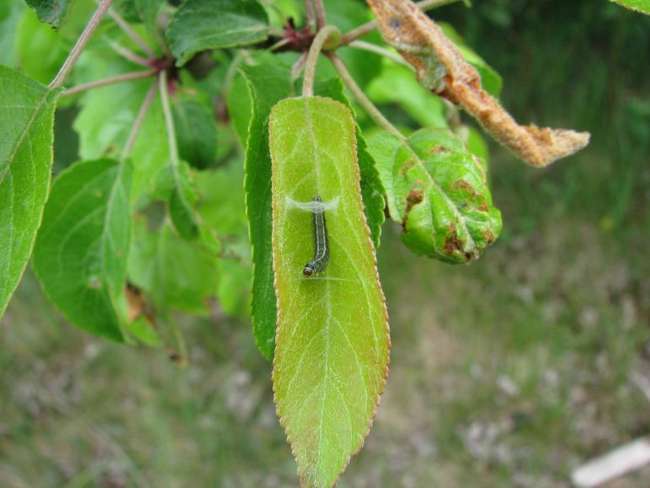

Moth
Adult butterflies are gray with brown spots on their wings. The larvae are worms, about 2.5 cm long.
Symptoms: Affected fruits have holes on the outside towards the nucleus.
To control pests, you should:
- spray plants with garden oil, soapy water; in spring before flowering;
- set traps from sticky balls and sweet baits;
- use drugs such as Intavir.
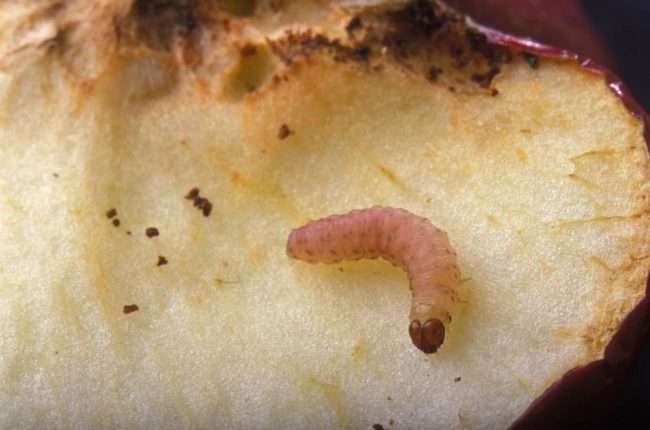

Scab
Causes a fungus that hibernates in fallen leaves. Cool, humid weather is favorable, more often in spring. Learn how to deal with apple scab.
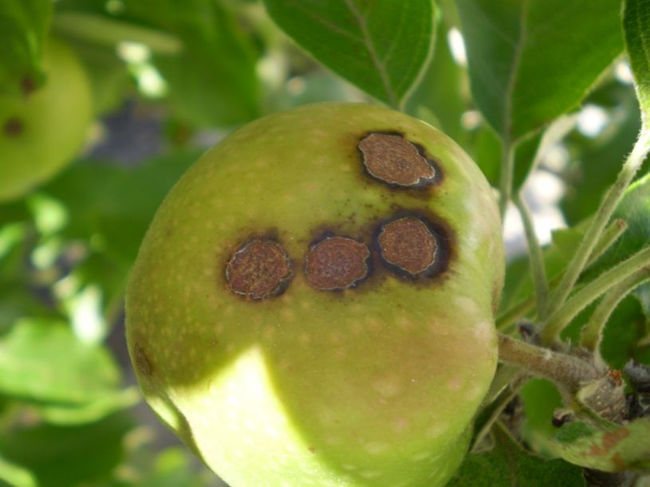

Symptoms: spots on young leaves are velvety and olive green turning black. Leaves wilt, curl and fall off. The fruit has spots, cracks, is deformed.
Fight:
- Plant scab-resistant apple trees
- remove dry branches and dispose of garbage;
- autumn cleaning is necessary to combat the overwintered fungus.
Disease of apple trees black cancer
This is a fungal disease of fruit trees. It is especially dangerous when the plant trunk is damaged. Looks like purple-brown spots. Gradually, the bark turns black, cracks and falls off. The wood also turns black and after 3-4 years the tree dies. You can only fight in the early stages of the disease. More details in the article Black apple cancer: control measures.
Symptoms:
- purple spots on the leaves, gradually turning brown;
- leaves fall off before fruit ripens;
- fruit damage, decay and mummification.
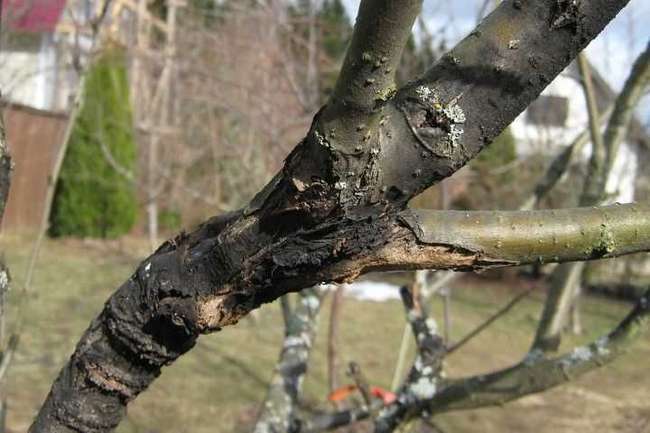

Preventive measures:
- Crop correctly.
- Disinfect the instrument.
- Treat cracks in time.
- In spring and autumn, whitewash the culture.
Fruit rot
Caused by a fungus spread by rain or irrigation. Warm, humid weather is favorable.
Symptoms: small, brown sunken spots on the fruit. The spots quickly grow and deepen and may appear as targeted concentric rings. If not removed, spores are passed on to neighboring fruits. Rot affects the fruit to the very core and mummifies it. The disease hibernates in affected fruits.
Fight
Remove affected fruits as soon as they are found
Learn more about fruit rot and disease control methods.
For diseases we recommend:
Use chemicals. Fitosporin is considered effective and not very toxic. Dissolve 10 tablets of this drug in 10 liters of water. Spraying is carried out three times a season: when buds are formed, after flowering and at the beginning of fruit formation.
Bordeaux mixture is processed before bud break. Then another 7 times, with a solution of 400 g of lime, 400 g of copper sulfate and 10 liters of water.
Korobovka (Medunichka, Skorospelka)
An old variety that begins to bear fruit no earlier than the 7th year. Resistant to frost, hardly affected by scab. Each of the names speaks of the qualities of the variety. In its fruits, acid is practically not felt, but there is a candy honey flavor. To some, it even seems a little bland. The early ripening variety is called because of the ripening period. And Korobovka - for the small weight of apples (40 g). Previously, these honey apples were sold not by weight, but in whole boxes. Fruits are yellow with red stripes.During ripening, they become transparent, if you look at the apple against the sun, you can see its seeds.
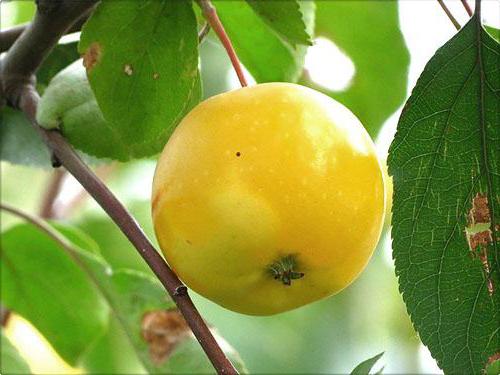

They do not last long. You can prepare for the winter by making jam. Dried honey apples are used to prepare a delicious compote. The recipe is simple: wash 200 g of apple slices with boiling water, pour 2 liters of water, boil for 10 minutes. Insist until it cools down.
Reproduction methods
There are many ways to propagate apple trees. You can buy a tree seedling and plant it in the ground. Another option is to plant them from seeds. The most common method is vaccination. It can be used to propagate the original variety or to restore damaged trees. We recommend reading about when you can graft apple trees and a separate article on winter grafting of apple trees.
Another way is grafting. Cuttings can be harvested almost all summer. In the morning, cut the young branches off the plant. Take a piece of a cut stem with three buds. Make one incision just below the lower kidney and the other just above the upper kidney. In the upper part of the cut, you need to leave a couple of leaves, and remove the rest.
Place good garden soil or rotten compost in a container. Pour a layer of sand on top. In it, cuttings form roots best. Plant to a depth of 1 to 2 cm so that the first bud is below the surface of the sand.
Then cover with foil, make a greenhouse. Water once or twice a week. Place in a shaded area. After a few weeks, shoots begin to grow, the cuttings take root. You can transplant them to a permanent place in the fall or spring.
Another way is to root the lower branches if they are close to the ground.
If there are no low-growing stems, you can cut out the bark on a young branch with a 1 cm wide ring. Tie a plastic bag, cover with damp earth, tie it at the other end. In this greenhouse, the twig will give roots. Make an incision at the top, cut a branch with roots in the fall and transplant to a permanent place.
How to transplant an apple tree to another place
Trees older than 5 years have a developed root system. Transplant to another place only as a last resort and at the age of not older than 15 years. You need to have some kind of block, because digging an apple tree with a shovel will be difficult.
It is better to do this in the fall, because trees are ready for the winter stress and will tolerate replanting more easily. Do this after the leaves have completely fallen off and before the cold weather. In the spring, do this before bud break. You can also transplant in winter, if the temperature does not fall below -5 degrees. In summer, move only winter varieties and additionally feed the plants.
Harvesting and storage
Collect fruits after they are fully ripe. Since they ripen unevenly, the process stretches from late August to early September. The winter variety is harvested later. The fruits on it also ripen unevenly, so they will have to be harvested within a few weeks.
Plucked fruits of summer varieties are not stored for more than a month. They quickly lose their taste. Winter ones retain their taste longer: they will not deteriorate within 3-4 months. Shelf life outdoors is shorter than in the refrigerator.
Questions from our readers
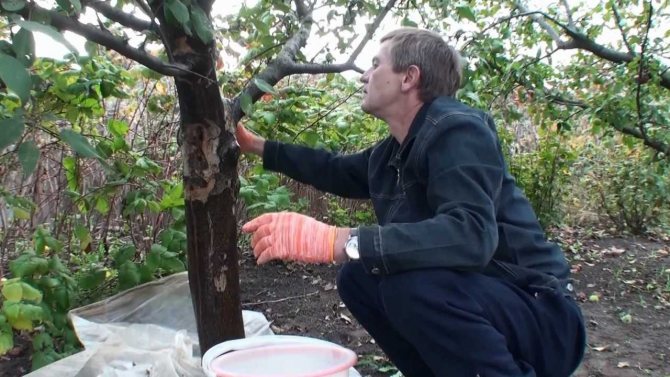

Why apples rot on an apple tree
The fetus is affected by moniliosis, an infectious disease. The reason may be the thickening of the plantings. Treatment with phytosporin or copper sulfate is required.
Brown leaves appeared on the apple tree
The reason for this is diseases and pests of culture: scab, cancer, powdery mildew, aphids, apple sucker. Adverse weather conditions, potassium shortage also affect.
How to close up a hollow on an apple tree trunk
First, you need to remove the rot with a garden tool. Then treat with a weak solution of manganese. Allow to dry and, if the hollow is large, hammer in a wooden cork, treat the cracks with polyurethane foam. Can be painted over with wood-colored oil paint.
Why are the spots on the leaves of the apple tree
Your tree is afflicted with apple scab disease. The reason may be insects - pests, lack of trace elements. Appropriate processing of the culture is required.

